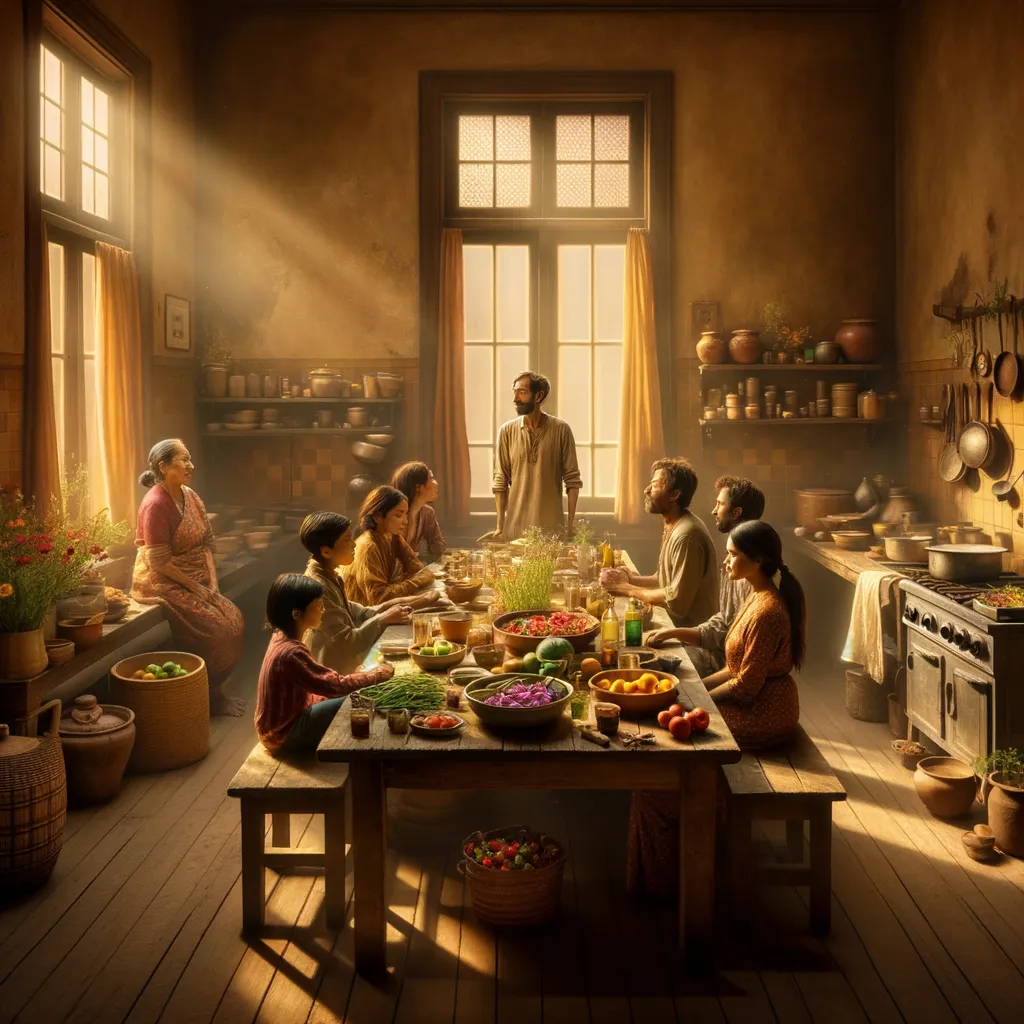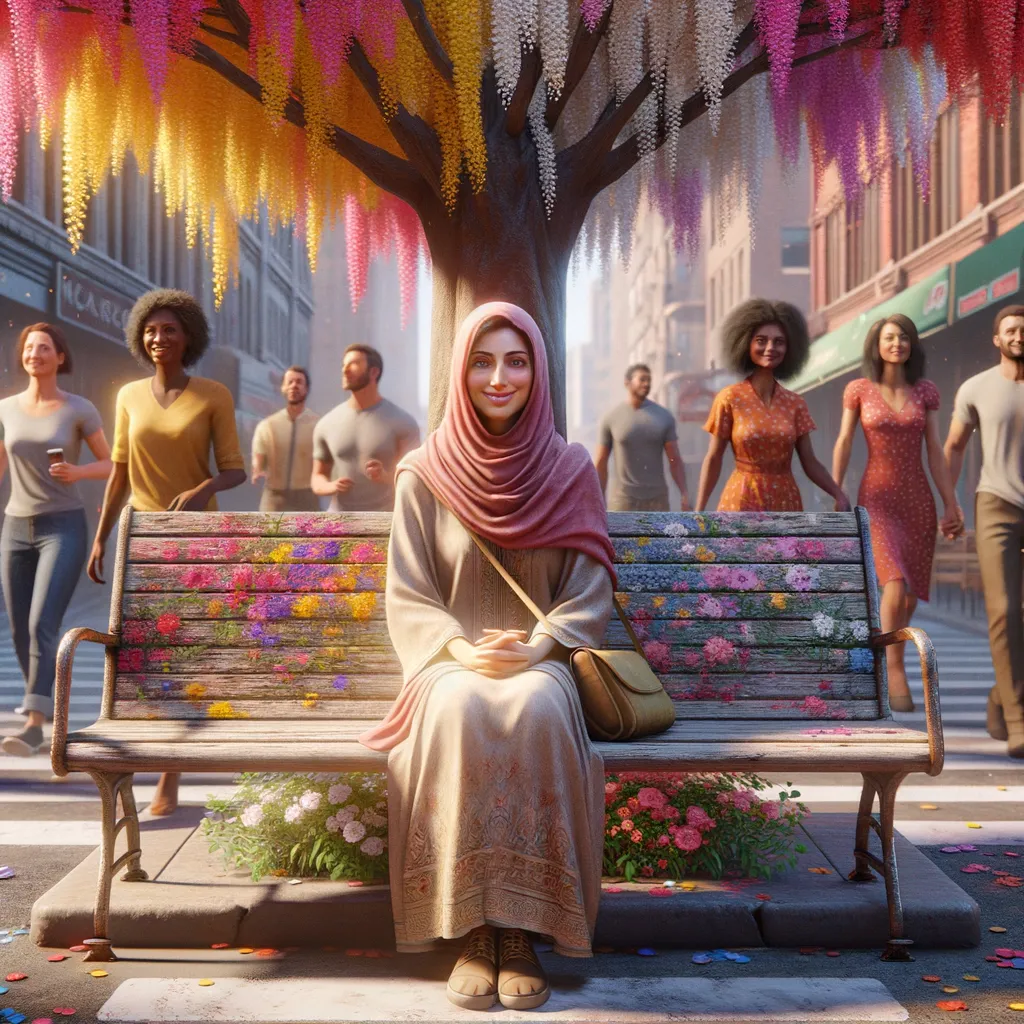A Kitchen Reunion: Discovering Love in Unexpected Places
In a sunlit kitchen filled with the intoxicating aroma of simmering spices, a family gathers for their cherished annual feast, unaware that this particular day will forever alter the fabric of their tradition. As laughter dances through the air, the unexpected arrival of an estranged uncle stirs a wave of uncertainty, yet the warmth of their customs envelops him, demonstrating the profound power of forgiveness and inclusion. In this bustling sanctuary, every ingredient tells a story, echoing the unique contributions of each family member, and teaching the young narrator the art of connection and empathy. As the evening unfolds, the table becomes a canvas for healing, transforming a once-distant figure into a beloved storyteller, reinforcing the idea that true nourishment extends far beyond food. In the years that follow, the lessons learned in that vibrant kitchen become a compass for the narrator’s life, guiding them to foster community and kindness, while leaving them pondering how to keep these invaluable stories alive for generations to come.
In the memory of March 18, 2000, I find myself standing in a sunlit kitchen, the air thick with the aroma of simmering spices and the sound of laughter ricocheting off the walls. It was a Saturday, a day that held more than just the promise of weekend leisure; it was the day of our family gathering, a custom that transcended mere tradition and seeped into the very fabric of our lives. This ritual, though seemingly simple, became a cornerstone of my values, shaping my understanding of connection, generosity, and the intricate dance of relationships.
Each year, as the calendar turned to March, my family would come together to celebrate our heritage with a feast that mirrored the diverse tapestry of our ancestry. The kitchen transformed into a vibrant mosaic of colors and scents, as my mother orchestrated the preparation of dishes that each carried a story. The sizzle of garlic in olive oil, the gentle bubbling of tomato sauce, and the sweetness of pastries filled the space, weaving a sensory narrative that spoke of love, history, and resilience. It was in this bustling environment that I first learned the art of giving; it wasn’t just about sharing food, but about sharing pieces of ourselves.
As I helped my mother roll out dough and chop vegetables, I absorbed the wisdom embedded in her movements. She would often pause to remind me that each ingredient had its own tale, just as every family member who would soon gather around the table did. This intertwining of food and family became a metaphor for life itself—each person, like an ingredient, added flavor and depth to our collective experience. It was an early lesson in empathy, teaching me to appreciate the unique qualities that each person brought to the table, and to savor the differences that made us whole.
On that particular March day in 2000, the unexpected came knocking on our door. An estranged uncle, long absent from family gatherings, arrived unannounced. The initial shock rippled through the room, but the warmth of our tradition wrapped around him like a comforting blanket. Instead of turning away, we embraced him, inviting him to share in our meal. The simple act of inclusion spoke volumes, revealing the power of forgiveness and the importance of extending a hand to those who may have faltered. In that moment, I understood that our customs were not merely rituals but lifelines that could bridge chasms of misunderstanding and hurt.
As the evening wore on, the table overflowed not only with food but with stories, laughter, and the kind of memories that etch themselves into the soul. My uncle, once a figure of uncertainty, transformed into a storyteller, weaving tales that captivated our hearts and brought us closer. The shared experience became a collective healing, and I realized that this was the true essence of our family gatherings: not just the food, but the transformative power of connection. This was a lesson that would resonate through the years, guiding me in moments of conflict and division.
The significance of that day extended beyond the plates and platters; it was a reminder that tradition is alive, evolving with each generation. As I grew older and ventured into the world, the lessons learned in that kitchen became the compass by which I navigated relationships and community. I found myself drawn to acts of service, volunteering, and advocating for those in need. Each time I offered a helping hand or a listening ear, I felt the echo of my family’s customs guiding me, reminding me of the richness that comes from shared experiences.
Years passed, and the gatherings continued, evolving with the rhythms of life. New faces joined us, bringing fresh stories and perspectives, while some familiar ones faded into the background. Yet, the essence remained unchanged—a commitment to love and inclusion, a testament to the resilience of family. With each gathering, I saw the importance of nurturing relationships, of cultivating an environment where everyone felt valued, and where their stories could be told and celebrated.
As I reflect on that day in March, I recognize how those family customs became more than just a practice; they shaped my values and the way I interact with the world. They instilled in me a belief in the importance of community, the power of kindness, and the necessity of understanding. These values became my guiding principles, influencing not just my personal relationships but also my approach to broader societal issues.
In the end, as the memories of those gatherings linger like the aroma of spices long after the meal is over, I am left with one lingering question: How do we ensure that the stories we share and the values we hold dear continue to resonate through the lives we touch?
In the heart of a sunlit kitchen, where laughter mingles with the aroma of spices, the true essence of family unfolds—a testament to the power of connection and the healing magic of shared stories.



